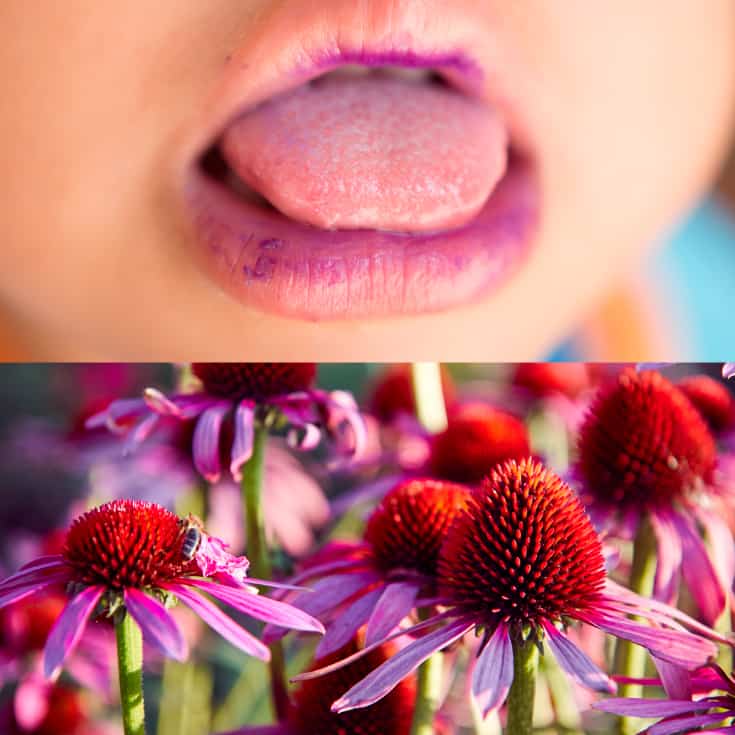This Dr. Axe content is medically reviewed or fact checked to ensure factually accurate information.
With strict editorial sourcing guidelines, we only link to academic research institutions, reputable media sites and, when research is available, medically peer-reviewed studies. Note that the numbers in parentheses (1, 2, etc.) are clickable links to these studies.
The information in our articles is NOT intended to replace a one-on-one relationship with a qualified health care professional and is not intended as medical advice.
This article is based on scientific evidence, written by experts and fact checked by our trained editorial staff. Note that the numbers in parentheses (1, 2, etc.) are clickable links to medically peer-reviewed studies.
Our team includes licensed nutritionists and dietitians, certified health education specialists, as well as certified strength and conditioning specialists, personal trainers and corrective exercise specialists. Our team aims to be not only thorough with its research, but also objective and unbiased.
The information in our articles is NOT intended to replace a one-on-one relationship with a qualified health care professional and is not intended as medical advice.
How to Get Rid of Ingrown Hair
February 20, 2019

Do you know how to get rid of ingrown hair? If not, you’re about to find out! Ingrown hairs are hair follicles that grow in the wrong direction. What helps with ingrown hairs? Getting rid of them can be even more challenging than getting rid of pimples, but there are some great natural remedies you can try. Plus, I’ll talk about natural ingrown hair prevention.
What Is an Ingrown Hair?
Ingrown hairs typically aren’t anything serious, but they can be quite irritating and visually unpleasant. Ingrown hairs form when a hair follicle is unable to get past a clogged pore, forcing the strand of hair to curl back in. This undesirable growth pattern of a hair growing back into the skin is more likely to occur after hair removal, including shaving, tweezing or waxing.
What does an ingrown hair look like? It’s usually an inflamed red bump or a cluster of bumps that look similar to small pimples. Sometimes, you can visibly see the hair growing in the wrong direction, but not always. An ingrown hair can also turn into a more painful, pus-filled sore.
Some conditions that can be mistaken for an ingrown hair include acne, eczema, a cyst, keratosis pilaris, heat rash, impetigo, pustular psoriasis and molluscum contagiosum.
Signs and Symptoms
Ingrown hairs are seen most often on the face, particularly around the beard area for men. The areas that are shaved most often such as the chin, cheeks and neck are known to be common ingrown hair locations. For both men and women, ingrown hairs are also often seen in the armpits, pubic area and legs … once again, areas where hair removal is commonly performed on a regular basis.
Signs and symptoms of ingrown hairs include:
- Skin irritation
- Small bumps with hairs in the middle, which often appear on the face and neck (an ingrown hair bump)
- Small bumps filled with pus which often appear on the face and neck (an ingrown hair cyst)
- Pain
- Itching
Do ingrown hair bumps bleed? They can if they become inflamed/infected and you pick at them.
Causes and Risk Factors
What causes an ingrown hair? Tweezing can result in ingrown hairs when part of the hair follicle is left beneath the skin’s surface. Pulling the skin taut during shaving can also cause ingrown hairs since this action permits the cut hair to draw back into the skin and re-enter the skin without first growing out. Other times, dead skin cells cause a hair follicle to become clogged, which leaves the hair no choice but to grow sideways beneath the skin’s surface.
An ingrown hair growing in the wrong direction is treated as a foreign invader by the body, and that’s why inflammation is common.
Anyone can experience an ingrown hair, but people who shave, tweezes or wax hair on their bodies are more at risk for developing ingrown hairs. According to the Mayo Clinic, having tightly curled hair is the number one risk factor for experiencing ingrown hairs. When tightly curled hair is cut and starts to grow back, it’s more likely to re-enter the skin rather than grow in a normal fashion. Shaving curled hair dry makes ingrown hairs even more likely.
Diagnosis and Conventional Treatment
It’s typically not hard for a doctor to diagnose an ingrown hair simply by looking at your skin. He or she may advise that you stop all hair removal techniques (shaving, tweezing and/or waxing) until the ingrown hair or hairs improve on their own. This may take a few weeks or several months.
If it’s not possible to refrain from shaving and other forms of hair removal, then laser treatment is another conventional option for how to get rid of ingrown hair. Laser hair removal removes hair a deeper level through exposure to pulses of laser light that destroy the hair follicle and prevent regrowth. Risks of laser hair removal include skin irritation, skin pigment changes, crusting, blistering, scarring or other changes to skin texture.
As part of conventional ingrown hair treatment, your doctor may prescribe certain medications such as retinoids, steroid cream or antibiotic ointment for ingrown hairs. To get rid of ingrown hair cyst with a serious infection, he or she may also recommend a course of oral antibiotics.
What will happen if an ingrown hair goes untreated? As long as it doesn’t become infected, there’s nothing to worry about. It should resolve on its own. Now, let’s talk about how to get rid of ingrown hair using natural remedies!
How to Get Rid of Ingrown Hair
If you have an ingrown hair on your leg, face or anywhere else, I’m sure you want it gone fast. Let’s talk about how to get rid of ingrown hair naturally.
1. Circular Washing
How to get rid of hair bumps doesn’t have to be a complicated process. According to Mayo Clinic, there is a really easy ingrown hair remedy; you simply wash the area around the ingrown hair with a soft-bristled toothbrush or washcloth in a circular motion for several minutes to hep release the ingrown hair. This is best done before shaving and before going to sleep at night.
2. Sterile Removal
Can you pop an ingrown hair? No, you should not try to pop or squeeze the affected area because not only can this damage your skin, but it can also result in an infection.
Wondering how to remove ingrown hair safely? Many medical experts will commonly say that you can use a sterile needle or tweezers to gently release the ingrown hair if it is near the skin’s surface. This method is absolutely not recommended for deep ingrown hair removal.
3. Patience
Do ingrown hair bumps go away on their own? Another option for ingrown hair removal is good old patience or the “wait and see” approach. Ingrown hairs may not be pleasant, but it’s very common for them to resolve on their own without you doing anything. Whatever you do, do not scratch at or try to pick at an ingrown hair with your fingers because this can increase infection as well as scarring risk.
So if you were wondering how to get rid of an ingrown hair naturally with zero effort — simply wait. As long as there is no infection and you’re sure it’s an ingrown hair, there is nothing to worry about.
4. Sugar and Salt
Can waxing prevent ingrown hairs? Waxing can actually contribute to ingrown hairs, but if you are going to wax your body, you may want to consider a more natural form of this hair removal technique. As an alternative to aggressive or chemical-laden waxing, you may want to try this DIY sugar wax recipe, although you can also find sugar waxing available at non-toxic salons.
Sugaring uses a paste made from a combination of sugar, honey, water and lemon juice to remove hair (not skin) without the discomfort of traditional waxing. This is an especially good option for anyone with sensitive skin. Sugar and salt are considered to be natural mild exfoliators that can be applied to an ingrown hair to help reduce redness or irritation. My homemade body scrub with sugar and sea salt is a great combination of these two amazing exfoliators.
5. Ice
To reduce the inflammation of an ingrown hair, you can apply ice or a cold compress. This is also helpful for any pain or itching you may be experiencing as a result of this confused hair follicle.
6. Tea Tree Oil
Essential oils can also help with ingrown hairs. One great choice to consider is tea tree oil. This essential oil from the Melaleuca alternifolia plant is well-known for its ability to improve skin health. Research demonstrates tea tree oil’s “broad-spectrum antimicrobial activity against bacterial, viral, fungal and protozoal infections affecting skin.” It can also speed up wound healing.
Simply apply a drop or two of pure tea tree oil to ingrown hairs once a day to discourage infection and inflammation while promoting healing.
7. Avoid Tight Clothing
If you’re wondering how to get rid of ingrown hairs on legs or any other area of your body, you’ll want to avoid wearing clothing that is tight and/or not breathable. Wearing clothing like this over an area where you have an ingrown hair can only make the situation worse. So, opt for loose fitting, cotton clothing that won’t rub against the problem area.
Whether you’re trying to figure out how to get rid of ingrown hairs on legs fast or how to get rid of ingrown hair on your neck, these tips are some tried and natural ways to say goodbye to ingrown hairs sooner rather than later. But now, let’s talk about how you can prevent these annoyances in the first place.
How to Prevent Ingrown Hairs
How to prevent ingrown hairs mainly revolves around proper hair removal techniques. If you want to prevent an ingrown hair, or even worse, an infected ingrown hair, you should never shave any part of your body dry. Always wet the area well with warm water and apply a high-quality, natural shaving cream first to soften the hairs. You can also apply a warm compress before shaving to help prevent ingrown hairs.
Shave in the direction your hair naturally grows and rinse off the blade following each stroke. Resist pulling your skin taut while shaving. Make sure you don’t use a razor blade for too long. The more often you replace the blade, the less likely you are to experience cuts and irritations like ingrown hairs. Some experts also recommend using a single blade razor to discourage ingrown hairs, especially on the face. Always rinse your face (or other area of your body) and apply a natural moisturizer when you’re done shaving. It can also help to allow the hair to grow longer prior to shaving it.
If you’ve struggled with ingrown hairs in the past and are wondering how to get rid of ingrown hair scars, here are eight secrets on how to get rid of scars.
Precautions
Ingrown hairs don’t typically warrant a doctor’s visit, but if you have an infected ingrown hair, or if ingrown hairs become a chronic problem, then you should see your doctor.
Complications of chronic ingrown hair can include a bacterial infection (due to scratching), permanent scarring, skin darkening (hyperpigmentation) and pseudofolliculitis barbae, also known as razor bumps.
Final Thoughts
- What does an ingrown hair look like? An inflamed red bump or a cluster of bumps that look similar to small pimples.
- People with tightly curled hair are more prone to ingrown hairs.
- Can you just leave an ingrown hair alone? Yes, as long as it’s not infected, how to get rid of ingrown hair natural remedies include just waiting for the ingrown hair to resolve on its own.
- You can prevent ingrown hairs by practicing good hair removal techniques such as always shaving with a clean, sharp razor and using a moisturizing shaving cream.
- How to get rid of ingrown hair naturally:
- Circular washing with a soft toothbrush or washcloth
- Removal with sterile tweezers or needle if the hair isn’t too deep
- Good old patience
- Exfoliation with sugar and salt
- Ice or a cold compress
- Tea tree essential oil
- Avoiding tight, non-breathable clothing








